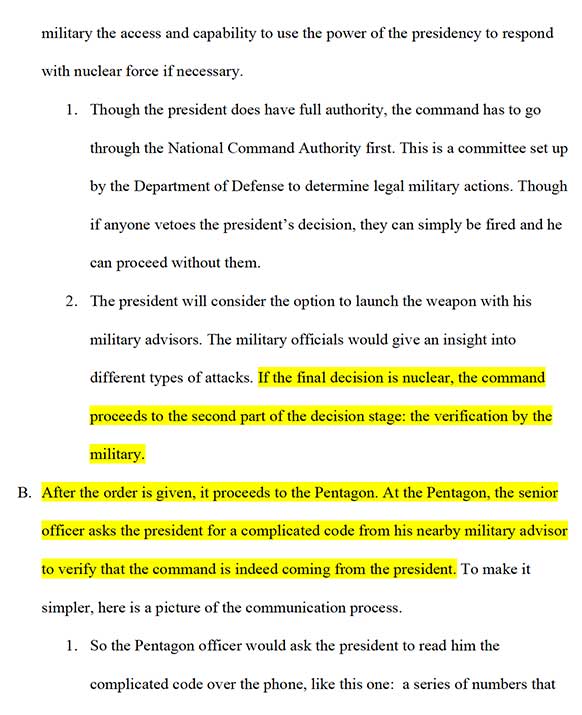Quick links
Organization is quintessential to quality public speaking and consists of two key parts: structure and transitions.
When we listen to a disorganized speech, we lose our place, forget the main ideas, and lose trust in the speaker. When we listen to an organized speech, we know where the speaker is taking us and how far into the speech they are. Consequently, we perceive the speaker as having a sense of authority, and we are more likely to remember the speech.
Structure
Structure is the order in which the points appear. Structuring a speech provides unity and makes your argument coherent.
As a principle, consider the structure as part of the writing process. Often, when students deliver a speech, the points are just arranged in the random order that they were drafted, with possibly “First,” “Second,” and so forth tacked on. Instead, consider the order that makes the most sense. Simply put, which points should follow each other?
What are some structures for organizing speeches?
There are many different ways to organize a speech. Below are resources, tips, and methods related to speech organization.
The Department of Communication, University of Pittsburghexplains different ways to structure a speech; the resource also contains useful organization tips. We recommend starting with the section “Organizing Main Points in the Body.”
This video goes over nine diverse structural options: chronological, spatial, cause & effect, problem solution, topical, pro/con, comparative, need/plan, and mnemonic. It briefly explains each structural method. To save some time, start watching at 1:13.
In general, carefully plan the order of your main supporting points.
- If topical, which points should follow one another and why?
- If comparative, as you go through each comparison, be consistent. For example, if the speech compares Apple and Samsung, start each point with Apple and then go Samsung or vice-versa; just stay consistent. You wouldn’t want to start point one with Apple and then point two with Samsung.
Monroe's Motivated Sequence (MMS) is a more complex but effective structure method. Sadly, MMS only works for persuasive speeches. In particular, persuasive speeches that call the audience to action. It consists of five parts:
- Get the audience’s attention: This can be done with stories, statistics, quotations, images, humor, or rhetorical questions.
- Establish the need: What’s wrong and what needs fixed? How is this topic relevant to your audience? How does it impact them? What are the consequences if they don’t fulfill the need?
- Satisfaction: Inform the audience on how to solve the presented problem. This is your main argument. The solution will look different for each speech but make sure to use supporting points.
- Visualize the future: Get the audience to imagine what the future will look like without this problem. You can compare it to a future where the audience does nothing.
- Action: Call the audience to action. If you’re stressing the need to vote, call on them to register.
For an example of MMS, watch this student speech on the urgent need for blood donations.
If you have any questions, visit us at the Rhetoric Center.
Resources related to speech structure
- Monroe’s Motivated Sequence: another resource
- Bizfuent: five common structural techniques (referred to as organizational patterns).
- The Rhetoric Center!
Transitions
Transitions connect one idea (or point) to another.
Transitions prevent confusion and make a speech easy to follow. They work as signposts to indicate to the audience where they’re at in the speech.
Speeches without effective transitions are likely confusing, no matter how well-structured they’re. Structure is important, but missing or misleading transitions can screw it up.
Transitions help move from one idea to another, both at the sentence and paragraph level. For a resource on writing speech transitions, check out this article. It gives twelve different ways to use transitions. Since 12 may be overwhelming, pick two or three and focus on them in your upcoming speech.
Oral presentations tend to emphasize signposts, a type of transition. By signposting we refer to announcing, signaling, and recapping so your audience knows what to expect. Announcing, signaling, and recapping also allow your audience to think about what they have just heard, making your speech easier to remember.
Announcing is what it sounds like: the announcement of what you’re doing or about to do. Signaling is the use of transitional phrases such as “next” to indicate an idea change. Recapping is when you summarize the main points and move on or end.
Common signpost transitions include “And in conclusion,” “And finally,” and “It follows that....” The Department of Communication, University of Pittsburgh provides an in depth breakdown of these transitions.
Seth Nishiyama from Centralia College in his speech “Nap Time” uses many signposts. See if you can find some!
Transitions can also be more complex statements that convey a logical progression in ideas. Click here to see an example.
B.J. Miller’s Ted Talk demonstrates an awareness of transitions.
A list of a few transitions he used:
- [Before the transition, Miller was telling a story of a deadly encounter] Transition: “That night began my formal relationship to death” [after the transition, he spends the rest of the speech explaining his “relationship’ with death.]
- Transition: “Now another great thing about necessary suffering is…”
- Transition:“If X is design cue one, then Y is design cue two.”
- Transition: “Meanwhile.”
Miller uses ideas that connect to other ideas (the first listed transition), entire sentence transitions (the next two listed transitions), and single transitional words (the last listed transition).







